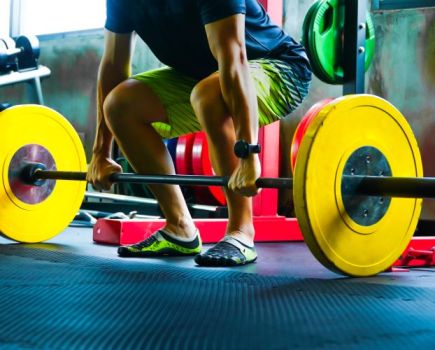In your pursuit of bigger arms or stronger legs, have you ever asked why shoulder mobility is important? Anyone who’s suffered from stiff shoulders will tell you.
The shoulder is one of your body’s most important joints. Connecting your arm to your torso, it’s integral to everything from everyday life to exercise as varied as swimming and overhead presses. That’s why every man should incorporate the best shoulder stretches into their fitness regimes – as well as working on it with one of the best foam rollers for post-workout recovery.
But for a joint that, according to the Cleveland Clinic, “has more range of motion than any other joint in your body”, how key is its strength? And why is shoulder mobility so important?
There are two main reasons why shoulder mobility is important: optimising performance and minimising risk of injury. They aren’t exclusive either, with one helping the other, creating a positive cycle to ensure both short-term and long-term health benefits. That’s why it’s best to add some drills to your regular warm-ups and routines, especially if you’re currently neglecting this area. Immobile shoulders can severely impact your daily workouts and long-term fitness goals.
Risks of immobile shoulders
Shoulder mobility is based on the stability of the scapula (your shoulder blade) and the flexibility of the eight muscles that support the joint. An unstable scapula can lead to a shoulder impingement – where the rotator cuff rubs on nearby tissue, causing inflammation, pain and discomfort that can last for months.
But there can also be an issue with having too much stability – where muscles are so big that the range of motion is restricted. In this instance, when it comes to weight-bearing exercises, form can be compromised through a lack of shoulder mobility, putting extra stress on your shoulder joint and therefore increasing the risk of injury.
How to test shoulder mobility
The easiest way to test your shoulder mobility is using the reach test:
- Raise one arm up above your head while leaving the other by your side
- Bend each of your elbows and attempt to get your hands to meet in the middle of your back – the goal is for your fingertips to touch, with overlapping fingers even better
- Repeat on the other side
- If your hands can’t touch and there’s a significant gap (more than 5cm) on one or both sides, it’s time to improve your shoulder mobility
How to improve shoulder mobility
If you find that your fingers don’t meet, all’s not lost. As your shoulder’s mobility is determined by muscles, you can improve it by adding shoulder stretches into your daily routine. You can then go on to add shoulder-specific strength exercises.
And even if your fingers do touch and you scored full marks in the shoulder mobility test, it’s worth including some shoulder stretches in your conditioning work anyway, to help keep shoulder injuries at bay.
Related content:







